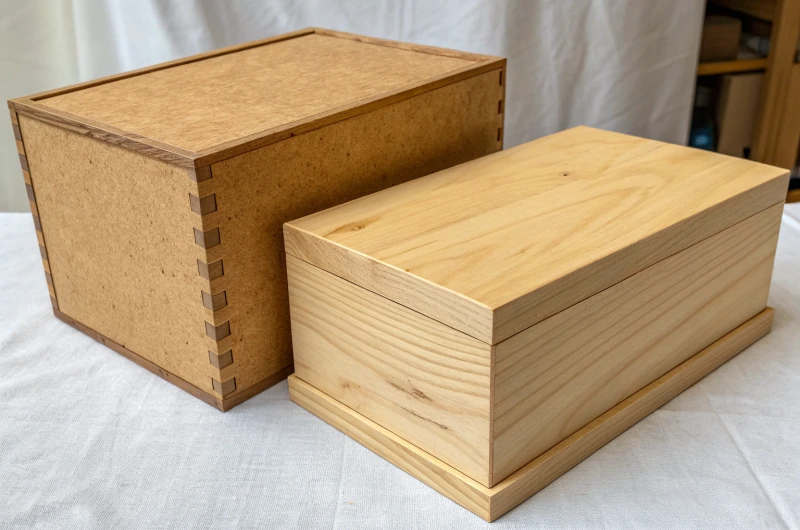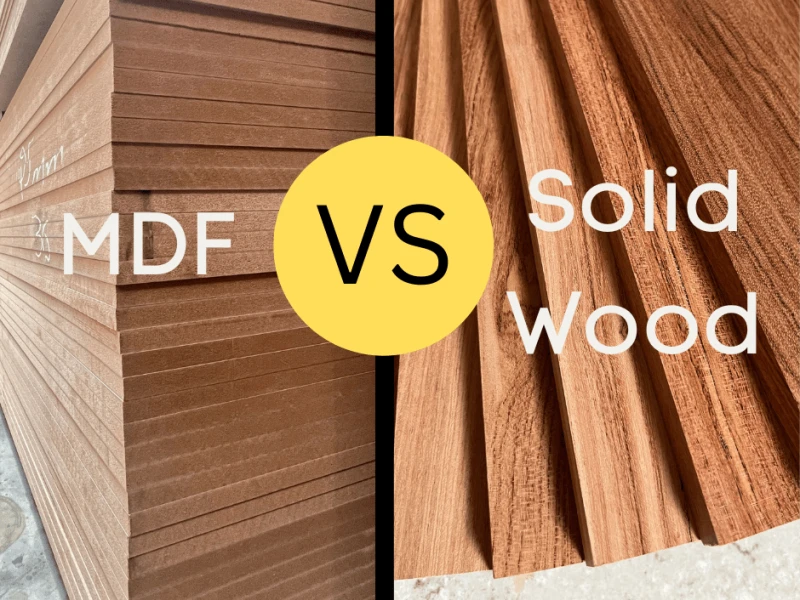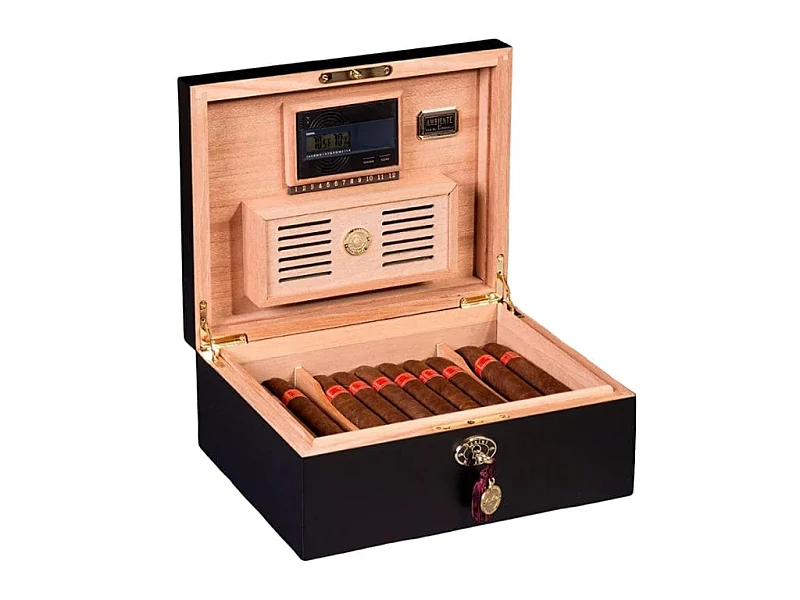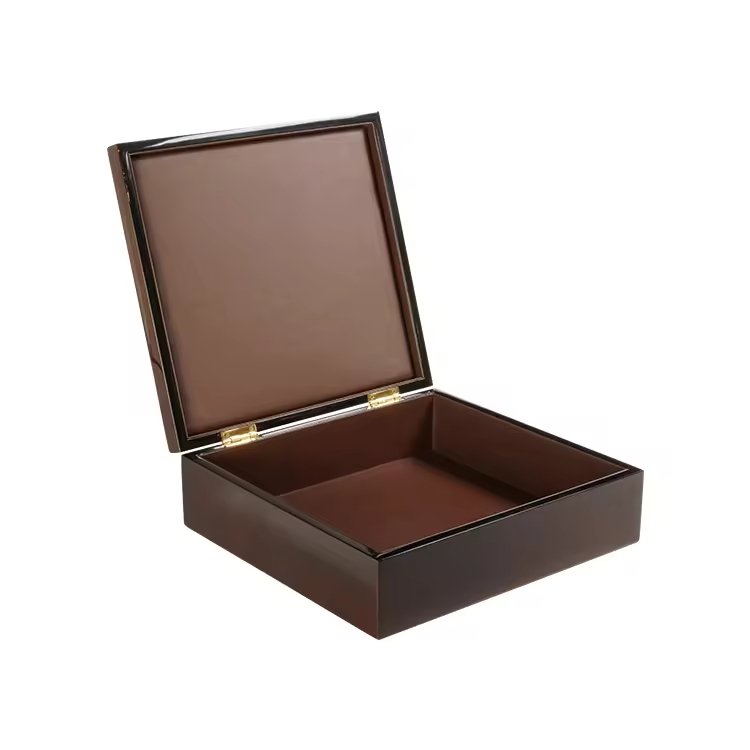
Miscommunication can turn a luxury cigar box project into a costly problem. Most mistakes come from unclear early-stage discussions.
The most common mistakes are unclear size, vague materials, unspecified branding, misaligned timelines, ignored functionality, and lack of written confirmation.
By clarifying each detail at the start, clients and manufacturers can save time, cost, and trust.
Why does unclear description of box size and capacity often cause misunderstandings?
Clients sometimes describe sizes casually. This creates confusion during design and production.
Unclear box size and cigar capacity often lead to wrong prototypes, wasted material, and client dissatisfaction.
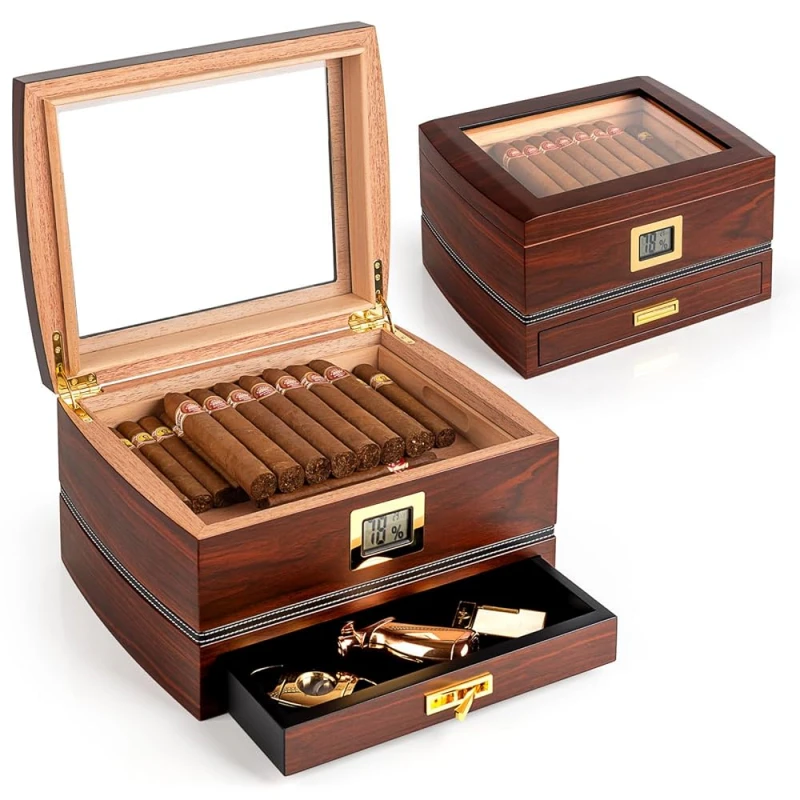
Cigars come in many lengths and ring gauges. A client might say “a 25-count cigar box” without noting if they mean Churchills, Robustos, or Toros. The same “25-count” box may need completely different dimensions.
Common Size Pitfalls
| Term Used by Client | Real Issue |
|---|---|
| “Standard size” | No true standard exists in cigar industry |
| “25-count” | Depends on cigar type and size variation |
| “Medium box” | Vague, no precise measurement |
I always request exact cigar dimensions in millimeters and ask for physical samples when possible. In one project, a client in Spain provided only photos and a “25-count” note. We made the prototype, but it turned out too small because their cigars were thicker than average. After that, I always insist on technical drawings or direct measurement confirmation. Clear size communication avoids double work.
How can vague terms about materials (like “high quality wood”) lead to wrong expectations?
Clients often use general terms, but wood and finishing choices vary greatly.
Vague material descriptions like “premium wood” lead to mismatched samples, unexpected costs, and client disappointment.

“High quality wood” may mean solid mahogany to one client, but only walnut veneer to another. Even terms like “rosewood finish” can mean different things: real rosewood or just a rosewood-colored veneer.
Example Misunderstandings
| Client Term | Possible Interpretations |
|---|---|
| “Premium wood” | Solid wood, MDF with veneer, PU wrap |
| “Glossy finish” | High gloss lacquer or shiny PU coat |
| “Natural look” | Clear varnish or matte veneer |
I always show real material panels. In one case, a US client requested “walnut.” I confirmed: “Do you mean solid walnut, walnut veneer on MDF, or walnut color lacquer?” They were surprised by the differences in cost and effect. By showing side-by-side comparisons, I helped them make the right choice before production. This prevents frustration later when expectations do not match reality.
What problems arise when branding details (logo placement, colors, engraving) are not specified early?
Branding is critical in luxury boxes. A missing detail here can ruin the final result.
If branding details are not clear, logos may look unbalanced, colors may mismatch, and production delays often follow.
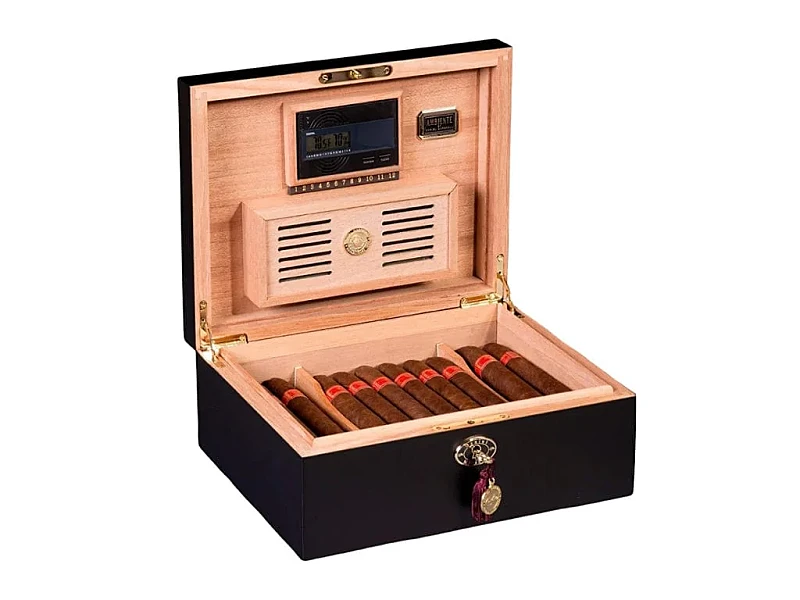
Logo customization requires early discussion of placement, method, and color. A logo that looks perfect on paper may clash with box hinges or surface texture.
Branding Issues from Poor Communication
- Logo overlaps hinges or magnetic closures.
- Colors printed differently due to lack of Pantone reference.
- Engraving depth too shallow or too deep.
- Metal plate size misaligned with box lid.
In one European project, a client only said, “engrave our logo on the top.” After making a sample, they said it looked off-center. The issue was hinge placement. We had to remake the lid, which wasted two weeks. Now, I always send mockups showing logo scale and position in relation to the box structure. This avoids costly mistakes.
Why is timeline and delivery date often misaligned between client and manufacturer?
Time expectations are one of the most common sources of tension.
Timeline problems arise when clients underestimate production steps and manufacturers fail to set realistic schedules.
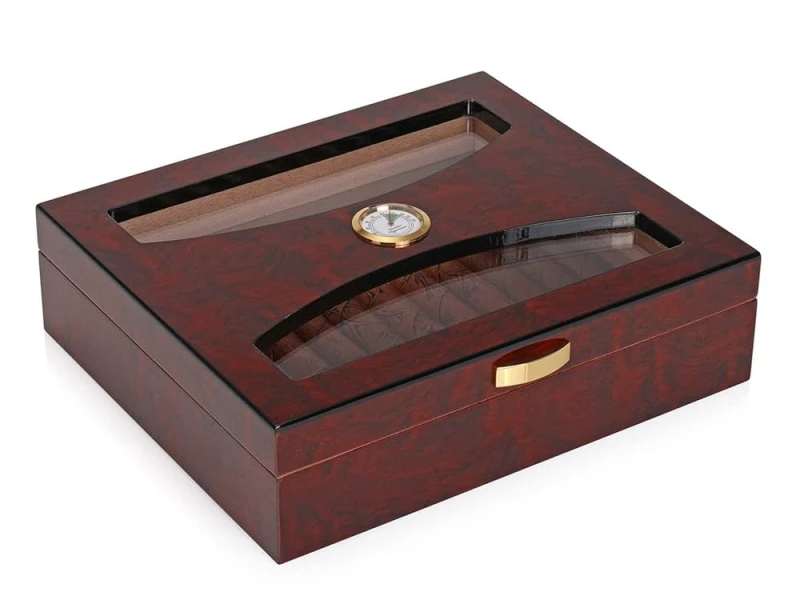
High-end cigar boxes, especially with piano lacquer, require multiple coats of painting, sanding, and natural drying. A single coat may take days to cure properly. Clients may expect a 20-day delivery, but real production needs 45–60 days.
Typical Production Durations
| Step | Average Time Needed |
|---|---|
| Design + Prototyping | 7–15 days |
| Painting + Drying | 20–30 days |
| Final QC + Packing | 5–10 days |
I explain every step in advance. In one project for a Middle Eastern brand, the client wanted a 1,000-piece order ready in one month. I broke down the timeline and showed why 45 days was the fastest possible without lowering quality. By setting expectations early, we avoided disappointment. Timeline alignment is as important as design alignment.
How does overlooking functional requirements (humidifier, hinges, inner lining) create issues later?
Cigar boxes are not just decorative. They must protect cigars.
If functional details are ignored, the box may look good but fail to preserve cigars properly.
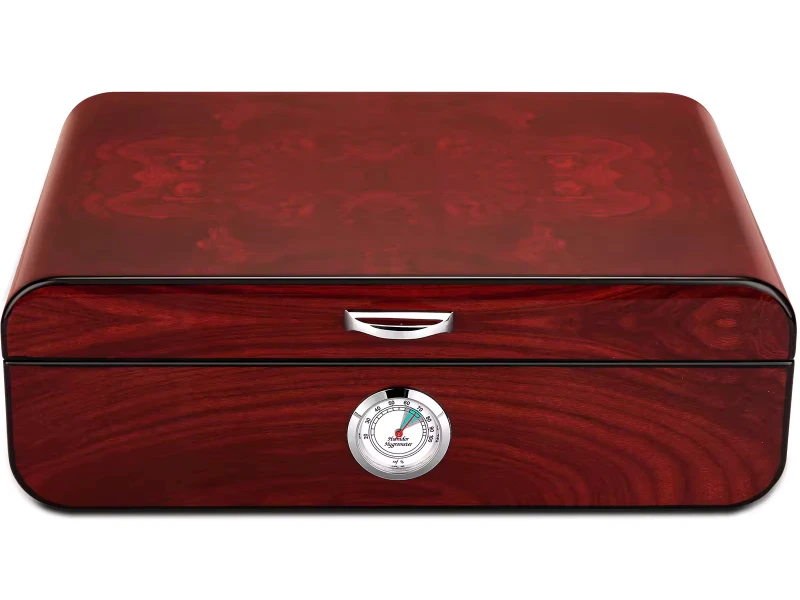
A client might say, “We need a luxury cigar box,” but not mention humidifiers, seal strength, or lining material. Without this, the final product may dry out cigars or damage them.
Common Functional Oversights
- Box capacity does not match cigar thickness.
- Hinges are too weak for heavy lids.
- No humidifier or poor air circulation.
- Lining material reacts badly to humidity.
I once worked on a project where the client forgot to mention they needed Spanish cedar lining. We built the first prototype with velvet interior. They later insisted on cedar, which required a complete redesign. Since then, I always ask: “Do you need cedar for aroma and moisture control?” Small questions like this prevent major errors later.
What steps can both sides take to document and confirm every detail before production starts?
Clear communication is not enough. It must be documented and confirmed.
Both sides should use written specifications, samples, and signed confirmations to avoid mistakes before mass production.
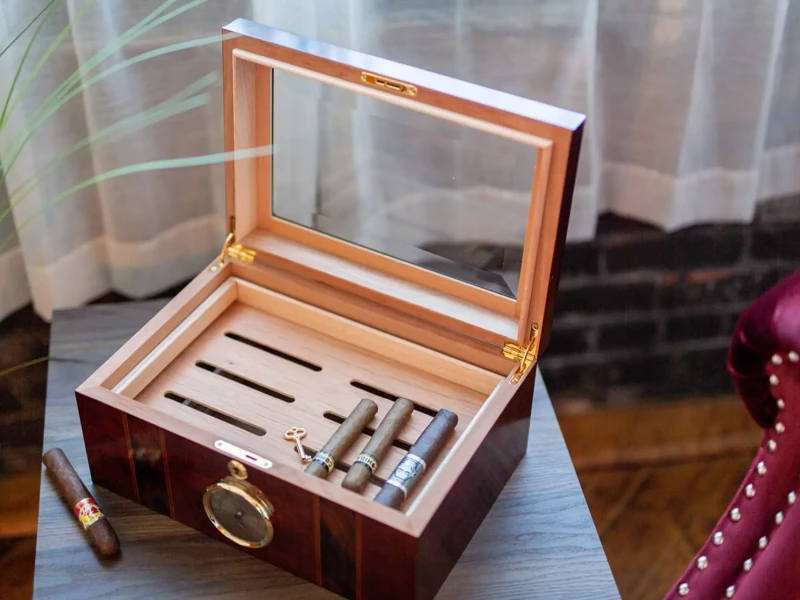
I always recommend a simple but strict workflow:
- Collect all size and material details in a written sheet.
- Provide 2D or 3D drawings with logo placement.
- Send real material and finish samples.
- Make one prototype for approval.
- Get written confirmation on every change.
Tools for Better Communication
| Tool | Purpose |
|---|---|
| Technical Drawing | Confirms size and structure |
| Material Sample | Confirms texture and finish |
| Prototype | Confirms overall look and feel |
| Confirmation Form | Locks agreed details in writing |
In one US project, I created a detailed PDF “confirmation sheet” that listed every aspect: size, material, finish, logo, timeline, and packing method. The client signed it before production. That project had zero disputes, even though it involved 800 high-gloss boxes. Documentation builds trust and ensures everyone works with the same understanding.
Conclusion
Avoiding vague terms and documenting every detail keeps cigar box projects smooth, precise, and successful.
Brand Name: WoodoBox
Slogan: Custom Wooden Boxes, Crafted to Perfection
Website: www.woodobox.com
WhatsApp: +86 18359265311

